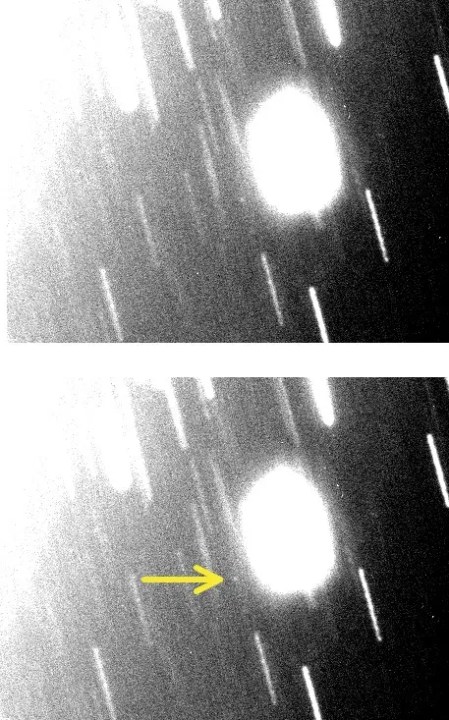Our solar system has a few new entries with the recent discovery of three moons of Uranus and Neptune. These ice giant planets are so far away that it is difficult to detect small moons orbiting them, especially when one of the recently discovered moons is the faintest moon ever discovered by a ground-based telescope.
Unlike Jupiter and Saturn, which both have a plethora of moons, Uranus is known to host 28 moons and Neptune just 16. That includes Uranus’s new diminutive moon, which is just 5 miles across. Like Uranus’ other moons, it will be named after a character from a Shakespeare plays, but a new name has not yet been chosen, so for now it is S/2023 U1.

The tiny moon was spotted using the Magellan telescope in Chile by Scott Sheppard of Carnegie Science. He also identified two Neptunian moons, S/2002 N5, which is around 14 miles across, and S/2021 N1, which is 9 miles across. “The three newly discovered moons are the faintest ever found around these two ice giant planets using ground-based telescopes,” said Sheppard in a statement. “It took special image processing to reveal such faint objects.”
The existence of the moons was confirmed using other telescopes, including the European Southern Observatory’s Very Large Telescope and Gemini Observatory’s 8-meter telescope. Multiple observations were required to confirm the moon’s orbit and size.
And one of the moons turned out to be something that had been spotted before, although not identified. “Once S/2002 N5’s orbit around Neptune was determined using the 2021, 2022, and 2023 observations, it was traced back to an object that was spotted near Neptune in 2003, but lost before it could be confirmed as orbiting the planet,” Sheppard explained.
One of the interesting facts about the discovery of moons of the distant planets is that the moon systems of the giant planets seem to be similar, despite how different the planets are.
“Even Uranus, which is tipped on its side, has a similar moon population to the other giant planets orbiting our sun,” Sheppard explained. “And Neptune, which likely captured the distant Kuiper Belt object Triton — an ice rich body larger than Pluto — an event that could have disrupted its moon system, has outer moons that appear similar to its neighbors.”



